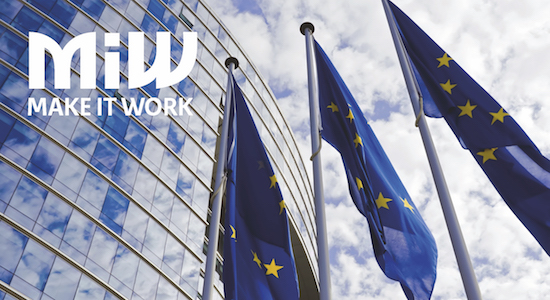Environmental Governance
Our Work
Latest in Environmental Governance
-
Beyond GDP Newsletter – December 2015 edition out now
The latest edition of the Beyond GDP newsletter explores indicators for a greener economy and for green growth.
-
How well has EU Cohesion Policy supported energy efficiency in buildings?
IEEP, with Danish consultancy Ramboll, has evaluated the contributions of the 2007-2013 Cohesion Policy programmes to energy efficiency in public and residential buildings.
-
Volkswagen: Painful Lessons
The latest edition of IEEP's newsletter is now available. David Baldock discusses Volkswagen and lack of implementation and compliance across EU environmental policy in general. Also: greening of the CAP; Marine Protected Areas; and LULUCF.
-
Protecting the interests of future generations
Do future generations get a fair deal from the policy decisions we make now? A new IEEP report for the World Future Council launched today suggests not.
-
Establishing an EU ‘Guardian for Future Generations’
Do future generations get a fair deal from the policy decisions we make now? A new IEEP report for the World Future Council launched today suggests not.
-
Beyond GDP Newsletter – August 2015 Edition Available Now
This edition of the Beyond GDP Newsletter explores the Social Progress Index and discusses approaches to using social indicators in the context of EU economic governance.
-
Tracking biodiversity expenditure in the EU budget
The European Commission is in the process of developing a methodology to track biodiversity related expenditure in the EU budget. This effort is similar to the parallel process for tracking ...
-
Looking beyond Paris
The latest edition of IEEP's newsletter is now available. David Baldock argues that in the next six months the EU has a substantive role in contributing to agreement on an ambitious but credible set of SDGs and more stretching climate targets. Also: energy efficiency and security; bioeconomy; and circular economy.
-
Tackling environmental crime
A workshop on environmental crime was held on 25 March in Granada, Spain, with Andrea Illes from IEEP providing insights into illegal e-waste shipments from the EU to China.
-
Beyond GDP Newsletter – March 2015 edition out now
The latest edition of the Beyond GDP newsletter looks closely at the Inclusive Wealth Index (IWI) 2014 and discusses the challenges of developing sustainability indices.How might a ...
-
Evidence before ideology
The latest edition of IEEP's newsletter is now available. David Baldock argues that in 2015 solid evidence rather than political fashion will be required in scrutinising EU policy and economic performance. Also: fossil fuel subsidies; allocating fishing quota; and the launch of our new training programme.
-
Access IEEP’s definitive guide to European environmental policy
The award-winning Manual of European Environmental Policy is now available on IEEP’s website. This archive provides free access to the definitive guide to the development of European environmental policy.
-
Getting delivery right: the EU 2030 climate and energy targets and the challenge of governance
The EU’s commitment to GHG reductions of “at least” 40% by 2030 are a useful contribution to international climate negotiations. But does the package of energy targets offered by the European Council at the same time put us on the right track to long-term decarbonisation goals? IEEP’s Martin Nesbit offers a personal perspective on what needs to be done, and how the governance arrangements need to be tightened.
-
The Manual: Front pages
This is a chapter of IEEP’s Manual of European Environmental Policy. This chapter provides information on the authors, editors and editorial board involved in the Manual, as well as guidance on how to use it, and a brief outline of its content.
-
The Manual: Chapter 1 - Policy framework
This is a chapter of IEEP’s Manual of European Environmental Policy. In this chapter, the reader is introduced to European environmental policy, EU institutions and agencies, and the development of EU treaties.
-
The Manual: Chapter 2 - Air quality
This is a chapter of IEEP’s Manual of European Environmental Policy. This chapter focuses on EU air quality policy. The policy field is extensive and contains many directives that impose standards, provisions and developments of air quality management and regulation.
-
The Manual: Chapter 3 - Climate change
This is a chapter of IEEP’s Manual of European Environmental Policy. This chapter on EU climate change policy outlines the initial EU programme to stabilise CO2 emissions in the EU with explanations of the directives, decisions and legislation that were employed to improve energy efficiency and reduce emissions.
-
The Manual: Chapter 4 - Industrial pollution
This is a chapter of IEEP’s Manual of European Environmental Policy. This chapter provides information on EU industrial pollution policy, which outlines and discusses the legislation in place to minimise the negative effects of harmful substances and pollutants on the environment and human health.
-
The Manual: Chapter 7 - Resource use
This is a chapter of IEEP’s Manual of European Environmental Policy. This is a chapter of IEEP’s Manual of European Environmental Policy. This chapter illustrates the variety of EU laws, policies and guidance documents that have been adopted to improve the efficiency of our use of natural resources and to reduce environmental impacts throughout a product's life cycle.
-
The Manual: Chapter 11 - Supporting policy
This is a chapter of IEEP’s Manual of European Environmental Policy. This chapter provides a detailed analysis of a number of existing measures currently in place used in assessing the impact of particular projects and activities on the environment.
Related

Make it Work project for smarter EU environmental law
The Make it Work project is an initiative of the Netherlands, UK and Germany, supported by IEEP, to deliver higher quality EU environmental law and so help deliver the benefits of that law.

Charting Europe’s Environmental Policy Future
Advancing the debate on the future strategic framework of EU environmental policy by analysing the needs, priorities and delivery mechanisms of a 7th EAP.
